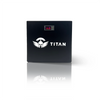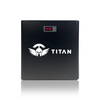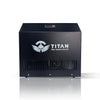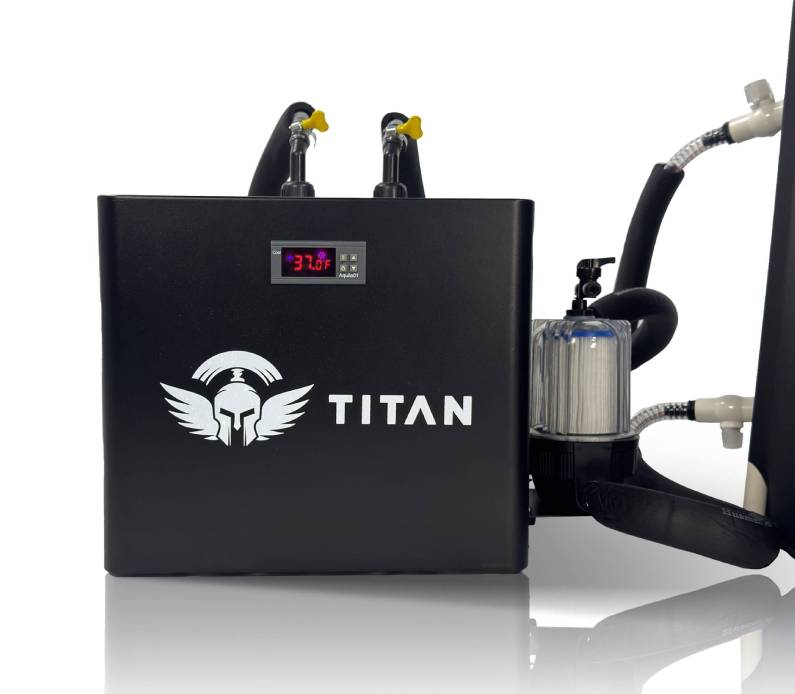You're about to learn about a powerful tool for better recovery, sleep, focus, and mood. It's about soaking your body in cold water to boost your natural healing.
This method is known for many benefits, like reduced inflammation and improved mental clarity. It's become popular among those who care about their health. By adding cold water therapy to your routine, you can see these benefits for yourself.
To start, you need to know the basics. The water should be between 50°F and 60°F. You should stay in for 2-5 minutes. As you dive into cold water immersion, you'll learn how to customize it for better recovery and sleep.
How To Choose the Right Protocol
To get the most out of cold plunge therapy, it's essential to select a protocol that aligns with your specific goals and health status. Whether you're aiming to enhance recovery, improve sleep, boost focus, or elevate your mood, the right protocol can make all the difference.
When starting cold plunging, safety should be your top priority. Experts recommend beginning with shorter dips and gradually increasing the duration as your body adapts. This gradual approach helps prevent shock and allows your body to acclimate to the cold stress.
The temperature is a critical factor in cold plunge therapy. The ideal range is typically between 50°F and 60°F, which is cold enough to stimulate physiological responses without causing undue stress. Individual tolerance to cold can vary significantly, so it's essential to adjust the temperature based on your comfort and goals.
- For beginners, starting at the higher end of this temperature range (around 60°F) can be a good starting point.
- As you become more accustomed to cold plunging, you can gradually decrease the temperature to around 50°F or slightly lower if you're comfortable doing so.
Key considerations when choosing your protocol include:
- Your current health status and any sensitivities or conditions that might affect your response to cold therapy.
- Your specific goals, whether it's recovery, improved sleep, enhanced focus, or mood enhancement.
- Your tolerance to cold, which will influence the initial temperature and duration you start with.
By carefully considering these factors and starting with a conservative approach, you can tailor a cold plunge protocol that is both effective and safe for you. Remember, the goal is to stimulate your body's natural responses in a controlled manner, so patience and gradual progression are key.
Safety and Progression Notes
To get the most out of cold plunging, you need to balance progression with caution. Listen to your body's signals. Cold plunging can be an effective tool for recovery, but it's essential to approach it with a clear understanding of how to do so safely.
Listening to Your Body
Listening to your body is key when starting a cold plunging routine. It's about understanding your limits and not pushing beyond what you can handle. Start with shorter sessions and gradually increase the duration as your body adapts.
Cold plunge recovery involves more than just the initial plunge; it includes gradual rewarming and hydration. After your cold plunge, take your time to rewarm naturally, avoiding sudden changes in temperature. Hydration is also key, as it helps your body recover from the stress of cold exposure.
When comparing cold plunging vs ice baths, while both involve cold water, the key difference lies in the duration and temperature. Cold plunging typically involves shorter exposure to cold water, often at a slightly higher temperature than ice baths. Understanding these differences can help you choose the method that best suits your recovery needs.
- Start with shorter sessions and gradually increase duration.
- Pay attention to your body's response and adjust according.
- Prioritize gradual rewarming and hydration post-plunge.
By being mindful of your body's responses and progressing gradually, you can safely incorporate cold plunging into your wellness routine. This can enhance your recovery, sleep, focus, and overall mood.
Recovery Protocol Time Temp Frequency
To get the most from cold plunging for recovery, knowing the right time, temperature, and frequency is key. These factors combined help achieve the best results.
Time: The length of a cold plunge matters a lot. Sessions for recovery can last from 5 to 15 minutes. Start with 5 minutes if you're new and slowly increase the time.
Temperature: The temperature is also very important. For recovery, aim for 50°F to 55°F (10°C to 13°C). This range helps reduce inflammation and boosts circulation without being too harsh.
Frequency: Being consistent is important in cold plunging for recovery. You might want to do it 2 to 3 times a week. Listen to your body and adjust how often based on how you feel.
Post-Cold Plunge Routine
After a cold plunge, following a specific routine is vital. Here's what to do:
- 0-5 minutes: Start warming up by wearing warm clothes or drinking something hot. Avoid sudden temperature changes.
- 5-10 minutes: Drink water or something with electrolytes to replace lost salts.
- 10-15 minutes: Do some light stretching or movement to help blood flow without overdoing it.
By sticking to this routine and post-plunge steps, you can improve your recovery. This will also boost your overall health and make your cold plunging more effective.
Sleep Protocol Time Temp Best Time of Day
Adding cold plunging to your sleep routine can change your game. It boosts slow-wave sleep and improves sleep quality. This happens because it activates the parasympathetic nervous system.
Optimizing Cold Plunge for Sleep
To make the most of cold plunging for sleep, keep these tips in mind:
- Temperature: Aim for a temperature between 50°F to 55°F (10°C to 13°C) for better sleep.
- Duration: Begin with 5-10 minutes and increase as you get used to it.
- Timing: For best results, take a cold plunge 1 to 2 hours before bed. This lets your body cool down and relax.
Benefits for Athletes and Individuals Alike
Cold plunging isn't just for athletes. It's great for anyone wanting better sleep. It helps with recovery, reduces inflammation, and leads to deeper sleep.
| Protocol | Temperature | Duration | Timing Before Bed |
|---|---|---|---|
| Beginner | 55°F (13°C) | 5 minutes | 1 hour |
| Intermediate | 50°F (10°C) | 10 minutes | 1.5 hours |
| Advanced | 45°F (7°C) | 15 minutes | 2 hours |
Adjust your cold plunge to fit your needs for better sleep.
Focus Protocol Time Temp Best Time of Day
Improving focus and mental clarity with cold plunges means knowing the best time and temperature. Cold plunges boost alertness and focus by releasing certain brain chemicals.
Here are some tips for using cold plunges to sharpen your focus:
- Duration: Begin with 2-3 minute sessions and increase as you get used to it.
- Temperature: Start at 50°F (10°C) and adjust based on your comfort and goals.
- Frequency: Aim for 2-3 sessions a week for focus, but adjust as needed.
Choosing the right time for a cold plunge can also help. Consider these options:
- Morning: A morning cold plunge boosts alertness and sets a productive day.
- Pre-Workout: It prepares your mind and body for exercise.
- Mid-Day: It's a great pick-me-up when you're feeling tired.
| Time of Day | Temperature (°F) | Duration (minutes) | Frequency |
|---|---|---|---|
| Morning | 50-55 | 2-3 | 3 times a week |
| Pre-Workout | 45-50 | 2-3 | 2 times a week |
| Mid-Day | 55-60 | 1-2 | As needed |
Always follow cold plunge safety tips. Start slow if you're new, and listen to your body. Following cold plunge protocols helps avoid overdoing it and ensures the best benefits for focus and mental clarity.
Weekly Planner Templates Beginners and Experienced
To get the most out of cold plunging, make a weekly plan that fits you. Being consistent is key to enjoying cold plunge therapy fully.
A weekly planner template can keep you on track and make cold plunging a habit. It helps both beginners and experienced people. A structured plan can improve your routine.
Benefits of a Weekly Schedule:
- Improved consistency in your cold plunging routine
- Enhanced recovery and mental clarity
- Better adaptation to cold temperatures over time
- Increased motivation and discipline
For athletes, a sample weekly schedule might look like this:
| Day | Time | Temperature | Duration |
|---|---|---|---|
| Monday | 7:00 AM | 50°F | 5 minutes |
| Wednesday | 7:00 AM | 50°F | 5 minutes |
| Friday | 7:00 AM | 50°F | 5 minutes |
You can change this template to fit your needs and goals. Beginners should start with warmer water and slowly get colder.
Tips for Creating Your Weekly Schedule:
- Start with a manageable frequency and duration
- Gradually increase the intensity and frequency
- Listen to your body and adjust the schedule as needed
- Combine cold plunging with other recovery techniques for enhanced benefits
FAQ
What is the ideal temperature range for cold plunging?
The best temperature for cold plunging is between 50°F to 60°F. This is cold enough to trigger good responses without being too stressful.
How long should I stay in a cold plunge?
Stay in a cold plunge for 2-5 minutes. This lets you enjoy the benefits without risking hypothermia or other bad effects.
What are the benefits of cold plunging for athletes?
Cold plunging helps athletes recover by reducing inflammation and muscle soreness. It also improves mental clarity, boosting performance.
How often should I do cold plunging for optimal benefits?
How often you do cold plunging depends on your goals and health. Aim to do it several times a week for the best results.
What is the difference between cold plunging and ice baths?
Cold plunging uses a controlled temperature, while ice baths are colder because of ice. Your choice depends on what you prefer and your goals.
How do I gradually rewarm after a cold plunge?
After a cold plunge, warm up slowly. Wear warm clothes, drink warm drinks, or take a warm shower. Avoid sudden temperature changes.
Can cold plunging help improve sleep quality?
Yes, cold plunging can improve sleep by regulating your body's rhythms and reducing stress. Doing it a few hours before bed is best.
What safety precautions should I take when cold plunging?
Start with short sessions and listen to your body. Be aware of any distress signs. Avoid it if you have health concerns and talk to a doctor if needed.
How can I incorporate cold plunging into my bedtime routine?
Do cold plunging a few hours before bed. Then, relax with reading or meditation to signal sleep time.
What are the benefits of consistent cold plunging?
Regular cold plunging boosts physical and mental strength, improves recovery, and sharpens mental focus. It's great for your wellness routine.


 30-Day Hassle-Free Returns
30-Day Hassle-Free Returns





